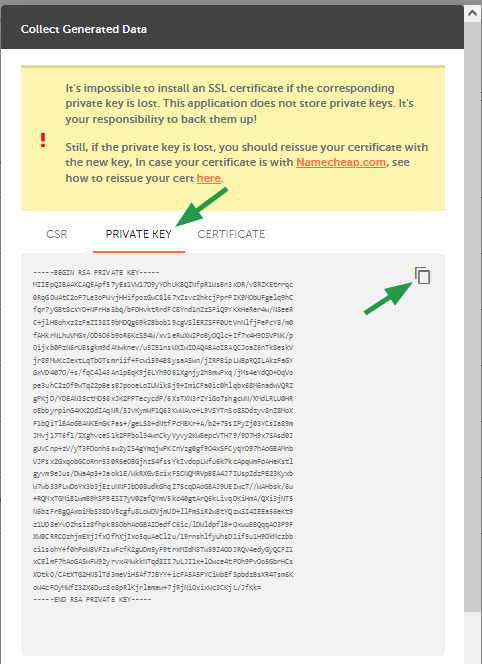
SSL stands to Secure Sockets Layer. It protects your website by diverting communication through secure channels that use sophisticated encryption keys. After the SSL handshake signal is received, the communication between the user and data ends is encrypted. This handshake signals that the communication was encrypted.
Secure Sockets
Secure Sockets Layer or SSL is a network protocol that encrypts a web client's connection to a web server. To decrypt and encrypt data, it uses two keys, one public and one private. SSL-enabled sites are identified by HTTPS in the URLs. A trusted certificate with a public key will be sent to a user who requests an encrypted session from a secure website.
To encrypt data between the client and server, the protocol uses asymmetric-key algorithm. The keys generated with symmetric encryption can be used for every connection. This is unlike other encryption methods. Client and server negotiate encryption details before the first bit of data is transmitted. This makes the encryption process secure and reliable.
Function
SSL is a security protocol that encrypts information being transferred between a website and its users. This means that only the intended recipient has access to the data. This is a great feature if sensitive data needs to be shared online. It makes it nearly impossible to intercept this information by hackers. SSL is therefore essential for websites.

SSL establishes a trusted connection between a browser and a web server, creating a secure connection. It does this by recognizing a web server's certificate and sending it to the browser. To verify that the certificate is valid, the browser inspects it. The browser will send a digitally signed acknowledgment back to confirm that it is valid. This will allow you to establish an SSL encrypted session. The browser and web server share the encrypted data.
Types
There are two types SSL certificate: self-signed certificates and third party certificates. A self-signed certificate offers data encryption and adds HTTPS to the address bar. But, a self-signed certificate can be forged by anyone without being verified. Most browsers will warn you if you visit a self-signed site.
SSL certificates are installed onto a web server (or multiple web servers) and used to validate domains. They can also be used to protect a website. Multiple domains and subdomains can be protected by an SSL certificate.
Importance
SSL stands for Secure Sockets Layer and secures the communication of sensitive information between computers. This secure connection makes it impossible for computers to intercept or detect the data. An example is when a website visitor submits their personal data in a contact page. Without SSL, hackers and identity thieves could intercept this data. All websites should have SSL encryption to protect the sensitive data of their users.
Google's rankings also depend on SSL. Google updates its ranking algorithm regularly, and having SSL can give your website a small boost in search engine rankings. SSL can also make users trust your site. Chrome, for instance, will show warning messages if your website isn't secured. Therefore it is important to obtain an SSL certificate.

Get a certificate
To protect your website against online attacks, it is important to obtain a certificate for SSL. SSL certificates provide information about the site's owner, including its public key, serial numbers, expiration dates, and the digital signature from the certifying authority. These certificates serve to authenticate your site and prove that it is a legitimate company. You can verify the certificate on your website by looking for the HTTPS in the URL.
Some CMS platforms make it easy to install SSL certificates automatically. HubSpot CMS offers a free SSL. It also handles renewing your SSL certificate. This will be done 30 days prior to the expiration date.
FAQ
How much does it take to build a website.
The answer depends on what you are trying to achieve with your website. For instance, if you just want to post information about yourself or your business, you might be able to get away with free services such as Google Sites.
But if your goal is to attract visitors to a website, it's likely that you'll need to invest in something more robust.
The most common solution is to use Content Management Systems (like WordPress). These programs enable you to create a website in no time. These sites are hosted by third-party companies so you don't have to worry about being hacked.
Squarespace is another way to create a website. Squarespace offers a variety plans that range from $5 per person to $100 per person, depending on what information you want to include.
How do I choose a Domain Name?
Choosing a good domain name is essential. It is essential to have a unique domain name. People will not be able find you when they search your product.
Domain names need to be short and simple to remember, relevant for your brand, and unique. Ideally, you want something that people would type into their browser.
Here are some tips for choosing a domain name:
* Use keywords related your niche.
* Avoid hyphens (-), numbers, and symbols.
* Don't use.net or.org domains.
* Avoid using words that are already taken.
* Try to avoid generic terms like "domain" or "website."
* Make sure it's available.
WordPress is a CMS?
The answer is yes. It's a Content Management System. CMS allows you control your website content using a web browser and not an application like Dreamweaver, Frontpage or Frontpage.
WordPress is absolutely free! Hosting is all you need, and it's usually free.
WordPress was initially designed as a blogging platform but now offers many different options, including eCommerce sites, forums, membership websites, portfolios, etc.
WordPress is easy and quick to install. To install WordPress, you will need to download the installer file from their website. Once it is downloaded, upload it to your server. Next, simply go to your domain name via your web browser and log into your new site.
After installing WordPress, it's necessary to register for a username. Once you have logged in, a dashboard will appear where you can view all of your settings.
You can now add pages, posts and images to your site. This step may be skipped if you feel confident editing and creating content.
But if you'd rather work with someone, you can hire a professional website designer to handle everything.
How much do web developers make?
A website is a project you can work on for your own money. You'll likely make $60-$80 an hr. You can charge more if you're an independent contractor. The hourly rate could be anywhere from $150 to $200
What is a UI Designer?
An interface designer (UI) creates interfaces for software products. They are responsible for designing the layout and visual elements of an application. The UI designer may also include graphic designers.
The UI Designer must be able to solve problems and understand how people use computers.
A UI designer should be passionate about technology and software development. From the development of ideas to their implementation into code, a UI Designer must have a thorough understanding of all aspects.
They should be able create designs with various tools and techniques. They should be able problem solve and think creatively.
They must be organized and detail-oriented. They should be able create prototypes quickly and efficiently.
They must be comfortable working with clients of all sizes. They must be able to adapt to various situations and environments.
They should be capable of communicating effectively with others. They should communicate clearly and concisely.
They should be well-rounded individuals who possess strong communication skills.
They must be motivated and driven.
They should be passionate for their craft.
What is a responsive design web design?
Responsive Web Design is a method of designing responsive websites. It allows content to display on all devices (desktop computers, tablets and smartphones), so that it can be viewed easily on any device. This allows visitors to view the website on one device and access other features like buttons, navigation menus, etc. RWD's goal is to ensure that users view the exact same version of a website on every screen size.
Consider, for instance, that you're building a website for an eCommerce company and your products are sold primarily online. It is important to ensure that your website can be accessed on any device, including a smartphone.
A responsive website will adjust its layout automatically based on what device is used to view it. The site will display exactly the same way on a laptop as if it were viewed on a desktop computer. It will look different if you view the page from your phone.
This allows you create a website that looks great on any device.
Statistics
- In fact, according to Color Matters, a signature color can boost brand recognition by 80%. There's a lot of psychology behind people's perception of color, so it's important to understand how it's used with your industry. (websitebuilderexpert.com)
- At this point, it's important to note that just because a web trend is current, it doesn't mean it's necessarily right for you.48% of people cite design as the most important factor of a website, (websitebuilderexpert.com)
- It enables you to sell your music directly on your website and keep 100% of the profits. (wix.com)
- It's estimated that in 2022, over 2.14 billion people will purchase goods and services online. (wix.com)
- Studies show that 77% of satisfied customers will recommend your business or service to a friend after having a positive experience. (wix.com)
External Links
How To
How to choose one CMS from another?
Two types of Content Management System are available. Web Designers typically use static HTML and dynamic CMS. WordPress is the most used CMS. Joomla is a good choice if your site needs to look professional. Joomla is an open-source CMS which allows you create any design website without needing to know any coding. It's easy to install and configure. Joomla comes with thousands upon thousands of templates and extensions, so you don’t need to hire an expert to set up your site. In addition, Joomla is free to download and use. Joomla is a good choice for your project.
Joomla is an excellent tool for managing all aspects of your website. It features a drag & dropped editor, multiple template support as well as image manager, blog management, blog management, news feed and eCommerce. Joomla is an excellent choice for anyone looking to build a website without learning how to code.
Joomla works on almost all devices. It is easy to build websites for different platforms.
There are many good reasons to prefer Joomla over WordPress. There are many reasons why Joomla is preferred over WordPress.
-
Joomla is Open Source Software
-
Easy to Install and Configure
-
Thousands of Ready-Made Templates and Extensions
-
Free to Download and Use
-
All Devices are supported
-
Powerful Features
-
Great Support Community
-
Very Secure
-
Flexible
-
Highly customizable
-
Multi-Lingual
-
SEO friendly
-
Responsive
-
Social Media Integration
-
Mobile Optimized